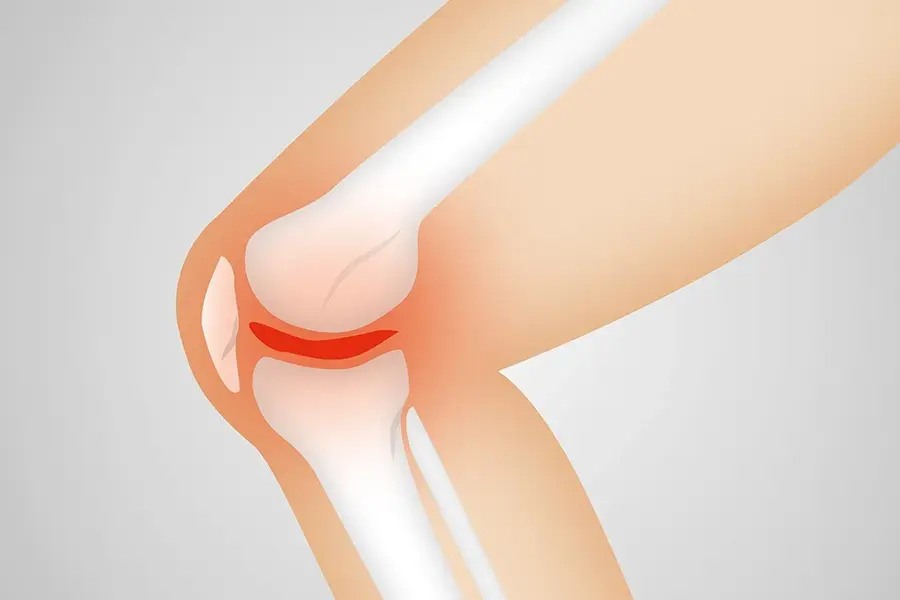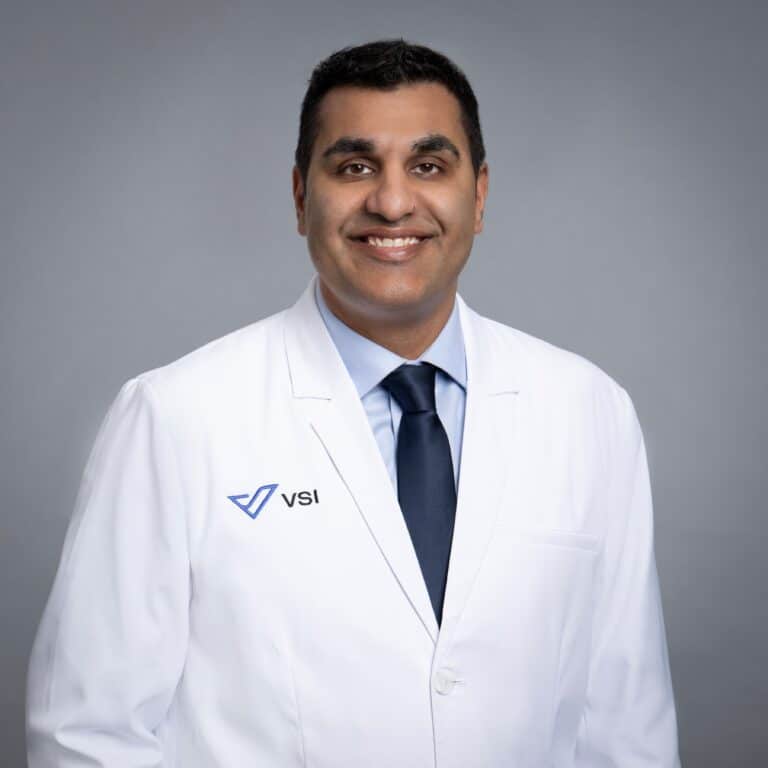
Uncovering a Solution for Osteoarthritis
Let’s take a closer look at osteoarthritis (OA) and the most common questions Dr. Niteesh Bharara gets as Director of Regenerative Medicine at VSI. Can you slow or even reverse OA? What are the best treatments? What kind of medical professional should you seek help from? I’ve got the answers so let’s tackle the most common questions I get about this very common and often painful condition.
Are arthritis and osteoarthritis the same thing?
Arthritis is an umbrella term that encompasses a number of diagnoses — psoriatic arthritis (PsA) and rheumatoid arthritis (RA) as well as osteoarthritis or OA. OA is the most common type and is present in thousands of my patients. 80% of adults over the age of 55 have it and 60% of people with it have noticeable symptoms. It’s due to cartilage wear and tear that comes with aging.
How do you tell what type of arthritis you have?
The biggest challenge is differentiating between PsA and RA. Those are both types of autoimmune arthritis so you’ll see destruction of joint spaces. Radiographically that looks different from the normal wear and tear of OA which is marked by cartilage loss and bone spurs.
How do you know if you have osteoarthritis?
We can see it on an X-ray. Doctors will likely rule out other issues through blood work too that can determine if you have any markers for underlying autoimmune conditions.
If there are signs of PA or RA — you want to go to a rheumatologist. Patients with OA often come see me.
If patients have OA, what can you do to manage it?
There are lots of ways to manage OA. You can’t fully avoid or prevent it. It’s part of aging. But it is a viable goal to work to prevent progression, minimize wear and tear and strengthen areas around impacted areas.
Some things that help you do that — staying at a healthy weight, use anti-inflammatory medications and embrace an anti-inflammatory diet. Work on good postural control and engage regularly in low impact exercise and activities.
Physical therapy works on posture control, strengthening muscles around the areas of arthritis and taking pressure off impacted areas. If you have knee OA for example, a physical therapist can help you strengthen your quads and hamstrings to avoid progression and unload pressure on your knee by making sure you’re using it properly.
These are usually the techniques we start with and the earlier we intervene the better.
Do steroid injections help with pain and inflammation?
Steroid injections are commonly recommended at this point. They can help manage the pain so you might see symptomatic improvement but they do have some negative effects to keep in mind. They can cause further destruction of cartilage in the joints and have impacts on the rest of your body too — increasing blood sugar and weakening bones. Repetitive steroid injections can also have a negative impact on joint spaces.
When would I turn to Regenerative Medicine and how would it help?
Regenerative medicine is more invasive than some of these other therapies. But if those other things don’t work, it can be a great solution on its own. It’s often also a bridge between therapy and surgical solutions.
We have two options — platelet-rich plasma (PRP) or stem cell therapy — the option we choose may depend on the person, their symptoms and their situation. But in general, we’re likely to try PRP first. It consists of two elements — plasma and platelets. Plasma is the liquid portion of blood and platelets are a type of blood cell that promotes healing. Platelets contain growth factors that trigger cell reproduction and tissue regeneration. PRP therapy is created by drawing a patient’s blood (like during a common blood test) and placing the sample in a centrifuge. The centrifuge spins rapidly, causing the blood to separate into its different components and allows for the collection of platelet-rich plasma. This concentrated plasma solution is put into a syringe for injection into the affected area.
PRP won’t cause cartilage to regrow but it can relieve pain, stiffness and inflammation caused by OA. This can improve and strengthen stability around the ligaments and tendons around your inflamed joints.
Stem cell therapy is an outpatient procedure that uses the body’s natural healing process to rebuild damaged tissue. Stem cells are extracted from your own bone marrow and injected into painful areas. They can differentiate into bone and cartilage to stimulate healing and joints can be improved with the higher concentrations of growth factors in stem cell therapy. In time this can relieve the pain, stiffness, and inflammation caused by osteoarthritis.
What is the impact of regenerative medicine on osteoarthritis?
While we can’t claim to fully reverse osteoarthritis (OA), we can significantly slow its progression and improve joint functionality, reducing or eliminating pain. Our objective is to make the joint asymptomatic, ensuring it no longer poses functional issues, and achieving this is very feasible.
What kind of different have you seen regenerative medicine make for patients?
We see a wide range of patients — from young people with early onset arthritis from a traumatic injury to older patients with age-related or overuse OA. Many come in with significant discomfort. If it’s knee OA for example, they often can’t walk more than a few feet without knee discomfort and, after PRP or stem cell therapy, they can walk a mile or two without any pain at all.
So is there one best treatment for patients with OA?
It is going to vary based on the patient, their symptoms, and a variety of individual factors. There are so many techniques to treat and manage arthritis that I think the best approach is to do multiple things. One solution in isolation won’t likely lead to the best outcome but focusing on several can absolutely reduce pain and inflammation, increase range of motion and your strength and make you feel better overall.
Topics covered
About the Author
Featured Resources
Insights to Achieve a Pain-Free Life



